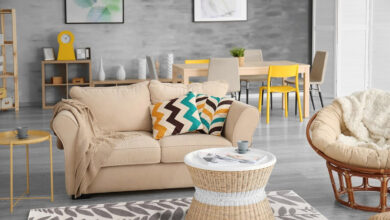
Summer Heat: Protecting Your Home From Heat and Sun
- Plants
- Roofs
- Sails, awnings, and blinds
- Lights and electricity
- Cooking
- Ceiling fans
- Practicality
Even with all the joys of summer, the “I’m melting!” sentiment always becomes inevitable in South Africa.
With the AC costing an arm and a leg and being generally detrimental to the environment, what else can you do to protect yourself from the maddening heat?
Well, as it turns out, you have options other than AC!
This article outlines some of the most efficient and cost-effective ways to keep cool during the hot summer months while giving your contribution to the protection of our planet.
Plants
There are two ways to approach this method:
Firstly, you can plant a tree in front of your window.
Be mindful of the position of the window and the way the sun moves in summer and in winter. This is a wonderful solution because it is aesthetically pleasing and it’s good for the environment.
Furthermore, it not only shields your house from the sun during summer but also allows light through the windows in winter when the leaves fall off, provided you choose a deciduous species.
Secondly, it is a good idea to plant vines.
Be careful with this one, because some more aggressive species can ruin the walls, especially if the mortar was already on the weak side. However, with species such as star jasmine or ivy, you shouldn’t have any problems, and the benefits are great.
Climbers stop your walls from heating, which helps in keeping your home cool. Additionally, they have an insular effect, which means that they achieve fantastic results when combined with an inside cooling mechanism.
Roofs
Even though it may sound strange, painting your roof white or covering it with any heat-reflecting material would do wonders for the temperature on the inside.
White roofs do not absorb the heat from the sun, and since your roof is the first thing that will be on the heat’s way, it would be a good idea to protect it.
Plus, people believe that white (or at least lighter) roofs can help global warming and save a pretty penny on the global level.
Sails, awnings, and blinds
Window awnings and sails are probably some of the most practical ways to shield your windows from the sun.
The biggest advantage of those is that they protect the windows from the outside. That means that they do not allow the glass to heat, thus preventing the heat from penetrating the window.
Another bonus is that you can get them waterproof, so they can protect you from rain as well, although you might want to make sure that the anchors for the sail are nice and strong. However, since sails and awnings are found on the outside of the home, it’s a good idea to put them away during the winter months, so as to prolong their lifespan.
Blinds, on the other hand, are typically inside, which makes them a bit less effective, but useful nonetheless. The sheer practicality of blinds makes them a necessary accessory to any home. They will prevent light (and heat as well) from entering, they’re easy to use, and they do not require any kind of special maintenance.
Lights and electricity
Do not use any unnecessary lights, because even a light bulb produces enough heat to warm up a small room by a few degrees.
Unplug everything you’re not using, because all of the devices that are plugged in produce heat as well.
Cooking
Even though easier said than done, try as much as you can to avoid cooking inside. A stove will produce a lot of heat, and an oven even more.
Instead of cooking inside, how about you use that simple ‘outdoor kitchen‘ aka the grill!
Alternatively, there are portable appliances that can be used for cooking outside. And, if you must, try to use microwave anytime possible, because it produces less heat.
Ceiling fans
Ceiling fans are, unfortunately, commonly misused.
When it’s hot, the fan should move in a counter-clockwise direction.
This way, the air is moving downwards and it feels like a summer breeze. This does not make the room necessarily cooler; the temperature stays about the same.
However, the breeze will produce the feeling of coolness, so the heat will be slightly more bearable.
Practicality
If everything else fails and you have to start that AC, be smart about it.
Choose one or two rooms that you want to keep cool, and try to waste as little energy as possible on the rooms that you’re not using. Bedrooms, for example, can be easily cooled down when you actually need to use them, after the sun has set.
The bottom line is, you do not need to use AC during summer as much as you probably do. Follow through with some of these ideas, and you may be surprised at the outcome. In the end, it may save you some money, and it may do a little good in the wider picture as well.
About the author: Jessie is a passionate blogger and home designer. She loves writing about tips and tricks that make every home a better place, inside and outside. Besides this, she loves sports, outdoor activities, and spending time with her close ones. You can connect with her on Facebook or Twitter.






